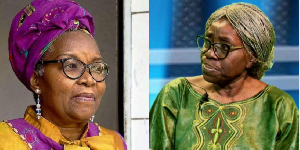The biometric recompilation of the voters’ register can be defined as a measure on the part of government to bring about greater transparency and credibility in the electoral process. This method involves the undertaking of voters’ registration all over.
The term, “biometric”, refers to the fact that in the process, biological aspects of the voter such as finger prints are taken at the time of registration such that if on voting day someone presents himself as someone else, the machine can easily detect the fraudulent attempt.
The process of biometric registration here in Cameroon is carried out by the country’s election governing body, Elections Cameroon, or as it is commonly referred to, ELECAM. Nonetheless, since the exercise is a new one into which ELECAM is stepping, the German technical assistance firm, GIESECKE and DEVRIENT came in as partners to stand with us all the way.
Already, the German firm participated in training Cameroonian biometric registration supervisors who were in turn to train some 2400 electoral agents by September 20 of 2013. Prior to the exercise, GIESECKE and DEVRIENT formally handed to ELECAM, the first consignment of electoral kits which would be used to conduct the biometric exercise.
The kits were specifically adapted for that purpose. Biometric recompilation was welcomed as a step in the right direction by ELECAM Director General, Mohmana Sani Tanimou and the organization’s Board Chairman, Dr. Fokam Azu’u Samuel.
A total of some 1200 elected kits were used by the 2400 agents nationwide, for the registration of voters. The kits were distributed according to local council jurisdictions, with the population size of the council being duly taken into account.
Concerning data collection and processing, this commenced at the level of ELECAM Council and Divisional Branches, and led to assembly and checking at the regional centre. Next, the data was forwarded to the central production unit in Yaoundé which is equipped with ready and waiting servers. Personnel were specifically trained to handle work at that level.
The involvement of political parties in the registration process comes at the point where they sent representatives to the joint voters’ registration committees and those establishing and distributing voters’ cards.
It is worth noting that according to ELECAM officials, by the time the recompilation of voters, registration was completed, some eight million voters were registered.
At the end of the exercise, each voter was to receive a biometric elector’s card bearing details including the individual’s names, date and place of birth, photograph, finger prints, profession and place of residence.
FOOT NOTE
This report is adapted from a paper that was first broadcast on Foundation Radio, the Voice of the Voiceless, Mile 6, Ngomgham, Mankon, Bamenda II Sub Dvision, Mezam Division of Cameroon`s North West Region by Tikum Mbah Azonga.
Opinions of Thursday, 16 October 2014
Auteur: Tikum Azonga














